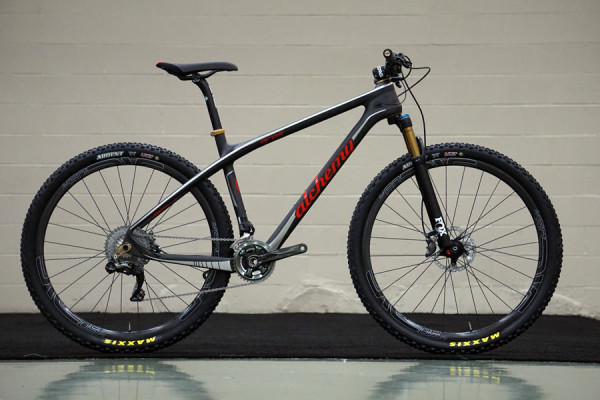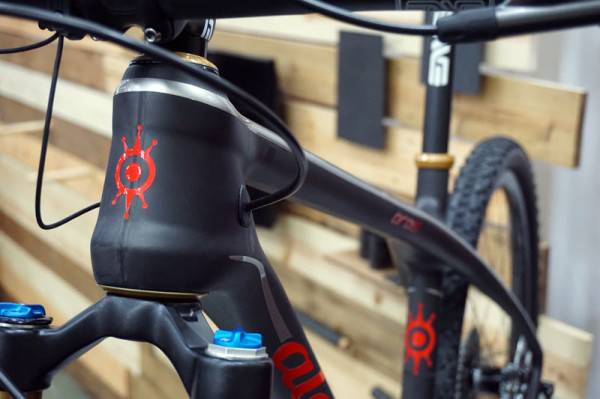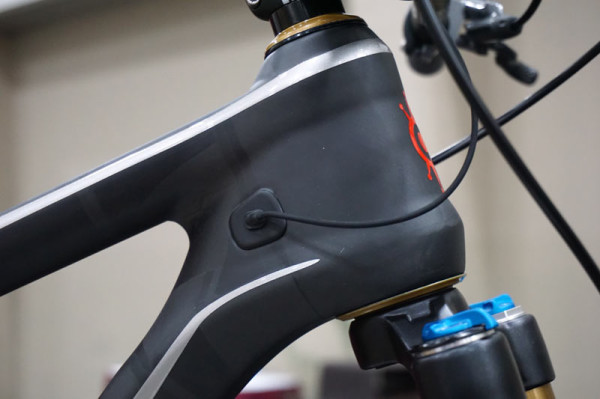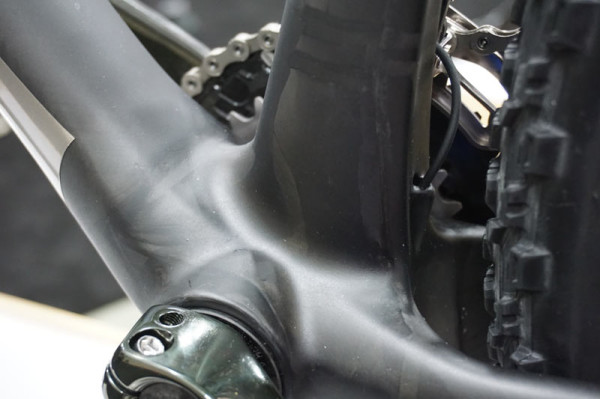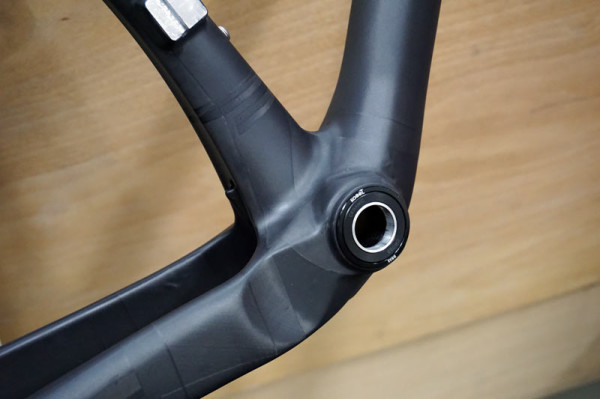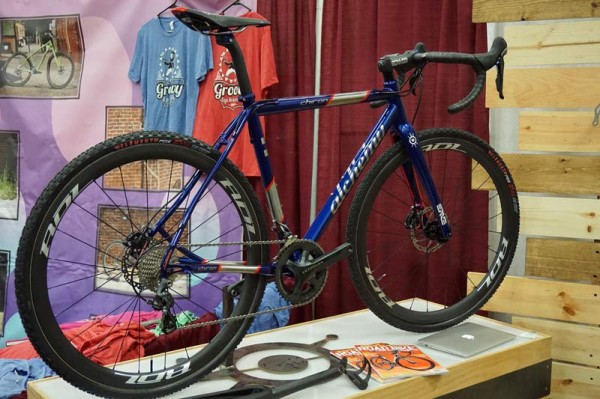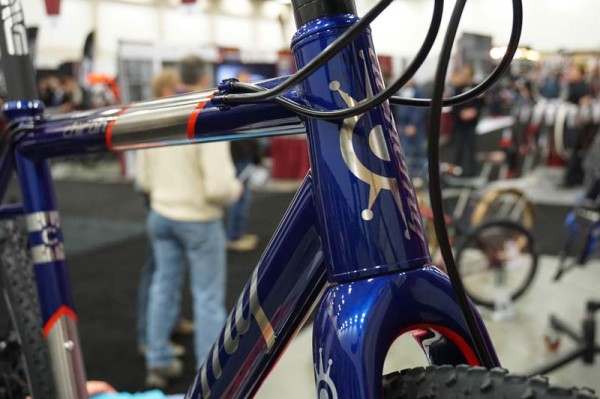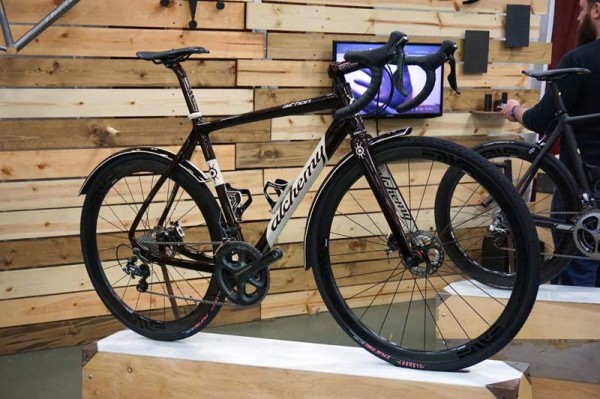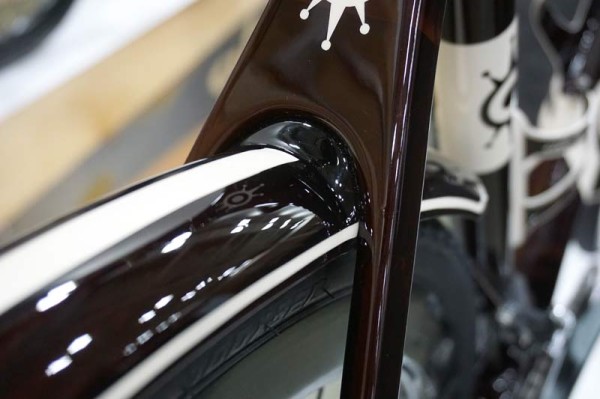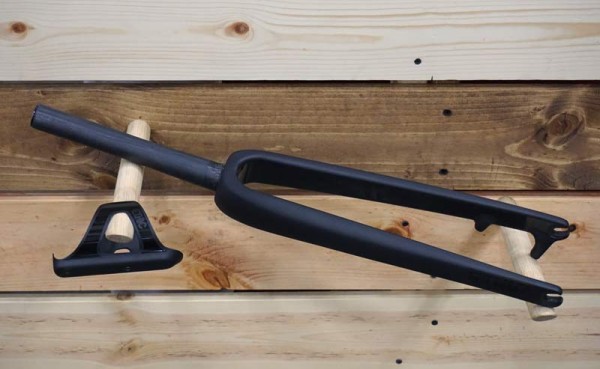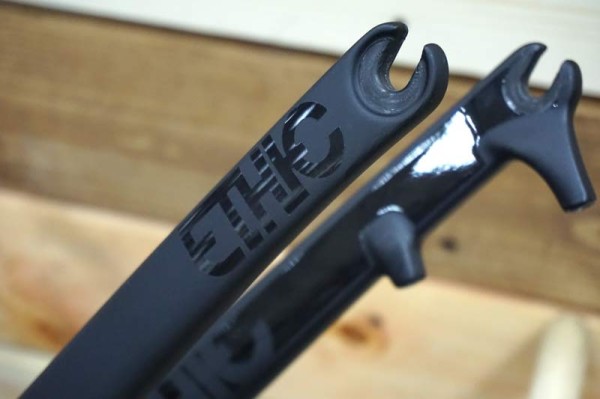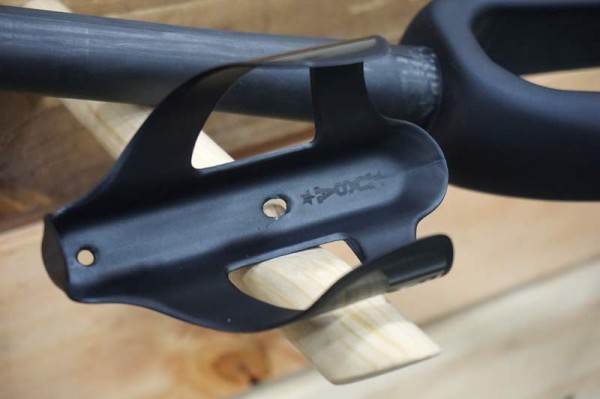Alchemy led their booth with the new Oros, their first carbon fiber mountain bike. It uses a trapped rubber molding process to achieve its big, bold shapes without compromising fiber compaction.
Like all of the molds for their other bikes, the Oros’ metal mandrels are made in house. They’re then wrapped in rubber and, after the frame is cured, the thinner metal mandrels can be pulled out, then the rubber becomes loose and can easily be pulled out.
The benefit of this method is that they’re able to get better pressure distribution on much more complex shapes. It also lets them create larger parts of the frame as a single piece. On the Oros, the top, head and downtube is a single piece. The bottom bracket cluster is one piece, the seat tube cluster is one piece, and each side of the rear, from seat stay through the dropouts and up the chainstay is a single piece.
Those pieces are sleeved, so they’re slotting together like tube to tube bikes, but then they’re overwrapped for increased strength.
All of the mandrels and tubes/sections are made in house. Even the rubber parts are cast in house, giving them complete control over the finished product’s shape and ride qualities.
All of those shapes are here for a purpose. The massive headtube creates torsional rigidity even though it’s fairly short, a generally necessity to keep overall front end height reasonably low on a 29er.
Cable ports use ballistic plastic plugs to keep the XTR Di2 wires in place, or swap in mechanical plugs to keep standard shift cables in place.
The seat tube cluster goes wide to give the seat stays a wider stance for better lateral rigidity and clearance for 2.3″ tires.
The bottom bracket is their usual melting pot of shapes, yet it all flows together quite nicely. Pressfit 86 is the norm around Alchemy’s HQ unless a customer specifically requests something else.
An indent on the driveside provides clearance for a double crankset.
Underneath the BB is a cable/wire access port, the perfect place for a Di2 junction box.
Frame weight is about 1,100 grams now, but designer Matt Maczuzak says he can probably carve out enough to bring a size medium under 1kg. Look for it to go on sale in a month or two, and frame and a Fox Float 32 fork would $3,950. That’s for stock sizing, offered in M, L and XL.
A small will also be offered with 650B wheels, and they may expand that wheel size to more frame sizes once things are up and running with these first offerings.
The Chiron is a new titanium cyclocross bike with custom laser cut dropouts done by a neighboring machine shop. The headset is their own design that integrates the cups into the headtube. That allows them to use a full 1.5″ tapered fork while having a larger lower head tube diameter than using a common 44mm straight head tube.
The headtube is their own design that integrates the cups. That allows them to use a full 1.5″ tapered fork while having a larger lower head tube diameter than using the common stock 44mm straight headtube. That means more surface area for the downtube to attach to, so the frame is stiffer. And because there’s no external headset cups, it’s very clean looking.
The BB is a PF86 using a shell made just for them. Retail is $3,900 for frame and ENVE fork with Cane Creek cartridge bearing headset.
The Aithon gravel bike debuted at last year’s NAHBS show, but this time around it sporting some new carbon fiber fenders with a very flush, integrated look.
Their gravel fork, which debuted on the Aithon, will now be offered aftermarket with new branding. Called Ethic, the line also includes new house-made carbon water bottle cages. This lets other handmade builders use these items without having a competing frame brand’s logo on it, and you to do the same.
Yes, a thru axle version is in the works. No ETA mentioned.
The cage is $59.99 and the fork is $525.
The fork’s claimed weight is 450g uncut and has a 385mm axle to crown. This one had the expansion plug in the end of the steerer and weighed in at 467g. The bottle cage a mere 26g.
